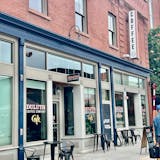Nina Katayama has had "something like a thousand appointments" since a 3-D mammogram revealed an aggressive form of breast cancer that had already spread to her lymph nodes.
The 51-year-old Minneapolis woman began her medical treatment with five months of chemotherapy, then underwent a double mastectomy in June of 2019. That was followed by eight weeks of radiation and additional rounds of chemotherapy.
One of the doctors she didn't see was a plastic surgeon.
Almost from the moment of her diagnoses, Katayama knew she didn't want an operation to rebuild her breasts.
"I have co-workers who wound up needing multiple surgeries, with stretching their skin and more trauma. So I said, 'No, I'm not going to go through that' and I've had no second thoughts," she said. "My breasts aren't small, they're nonexistent. That's just me now."
Reconstruction surgery after a mastectomy or lumpectomy aims to restore the breast to its previous shape, size and symmetry by using implants or taking tissue from another part of the woman's body. Numerous studies have concluded that reconstruction after surgery contributes to the psychological well-being of women recovering from breast cancer.
But a growing number of breast cancer survivors like Katayama are choosing to forgo such procedures. Many of the women who "go flat" also decline to use a bra with prostheses to create any sort of breast shape, preferring instead to live with a perfectly level chest.
Dr. Michaela Tsai understands why.



